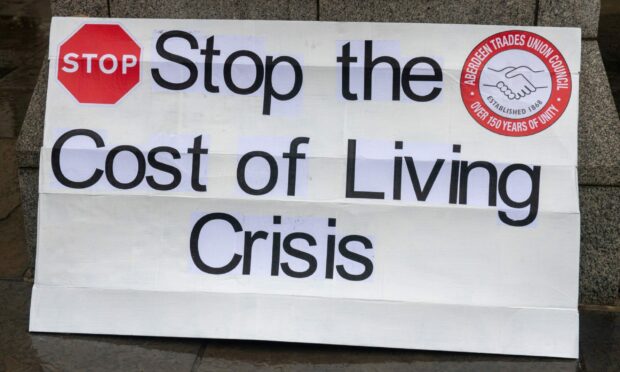This month saw the much-feared uprating in the Ofgem price cap, meaning the average UK household will now pay 54% more for their energy bills compared to the six month period between October 2021 and March 2022 and a whopping 73% more than a year ago.
Meanwhile, petrol prices are up by 30% on the year while diesel prices have risen even faster, by 36%.
In short, the cost of living crisis has well and truly arrived in the UK.
Over the coming months, the headline inflation rate is expected to rise a further 2.5 percentage points from its February level of 6.2%, far outstripping wage growth, which has trended downwards since the statistically inflated highs seen in the summer last year.
Households losing out £2,320 each
Our models show a fall of 3% in real household disposable incomes for the calendar year of 2022, equivalent to a £2,320 hit per household, inflicting the biggest fall in living standards since comparable records began in the 1950s.
Typically, drops in living standards occur due to slow growth, high inflation, or – in the worst of cases – a combination of the two.
The stagflation seen in the 1970s caused year-on-year contractions in living standards in three out of the four years leading up to 1977.
Following the second oil crisis in 1979 and another spike in inflation, household incomes fell again in 1981.
More recently, the global financial crisis led to several quarters of falling living standards, though the drop was small compared to those observed in the 1970s.
This was followed by a more severe contraction in disposable incomes of 1.8% in 2011 when the UK narrowly avoided a double-dip recession.
Between Q2 and Q4 2016, living standards dropped as a reaction to inflation resulting from the sudden devaluation of the pound following the Brexit referendum.
As these examples show, changes in household incomes are mostly tied to the economic fortunes of the country and tend to follow the swings of the economic cycle.
However, the upcoming drop in living standards is different to this as it is set to precede an economic slowdown.
Most forecasters, Cebr included, still expect the UK economy to exhibit growth in each quarter of 2022.
Yet the energy price crisis will mean that households will be notably worse off as incomes won’t be able to keep up with inflation.
As a result, the traditional causality might reverse and the fall in living standards could be a contributing factor to weaker growth – and notably – an uptick in unemployment.
Energy crisis will slow growth
Consumer spending will weaken over the coming months as households cut back on discretionary expenditures.
This comes at a time when many businesses, especially in the hospitality industry, are desperately in need of a good season, following two difficult years that have drained financial reserves.
In the meantime, business insolvencies have already started to pick up, with Q4 2021 recording the highest number of insolvencies in nearly eight years and data showing a similar picture for January and February this year.
A continuation of that trend could spell the end of the labour market recovery that has seen unemployment trending down over the past year.
This is made more likely still by the fact that many of those who have left the labour force over the past two years might see themselves forced to go back to work to pay for higher bills.
There are now over 689,000 more people economically inactive than in the three months to February 2020, with 40% of that figure accounted for by the 50- to 64-year-olds.
Even if just a third of those people will re-join the workforce over the coming months this would spell a significant expansion of labour supply – a development that is generally to be welcomed.
However, it could come at a time when hiring intentions are already weakening.
Even accounting for some moderate employment growth over the coming quarters, the additional labour supply would mean that the unemployment rate could rise to 4.6% by Q4 2022, up from its current level of 3.9%.
It could be the first sign of a broader economic slowdown caused by the energy crisis.
Kay Daniel Neufeld is head of forecasting and thought leadership with the Centre for Economics and Business Research (Cebr)


